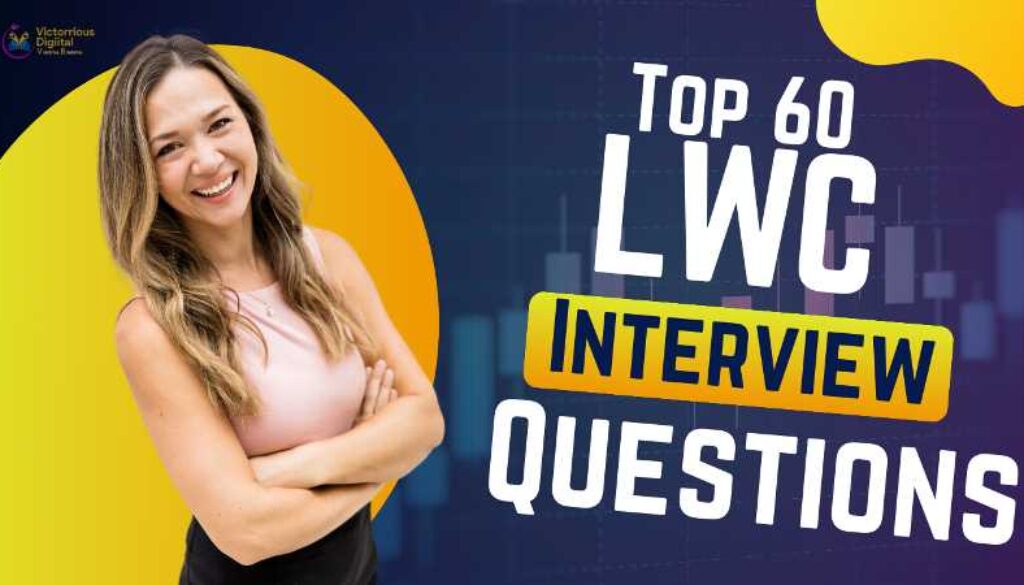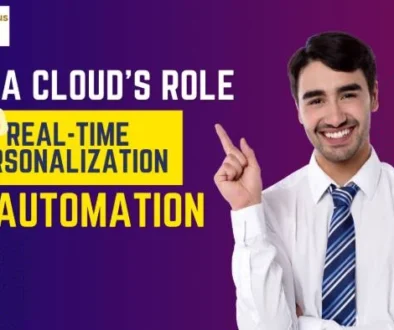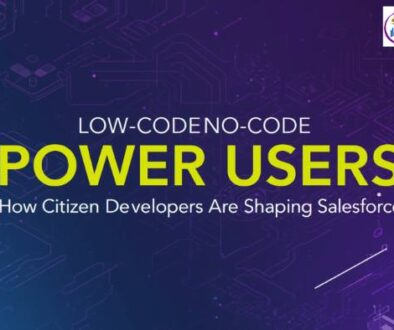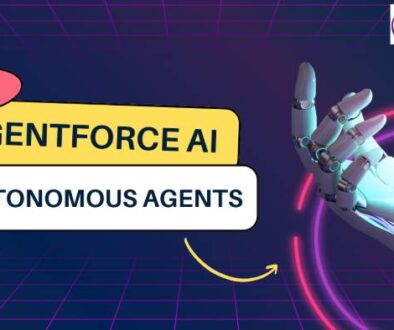Top 60 LWC Interview Questions
Table of Contents
What is @AuraEnabled(cacheable=true)?
Ans: The @AuraEnabled(cacheable=true) annotation allows an Apex method to retrieve data while preventing DML operations (such as Create, Update, Delete).
It improves performance by caching the response on the client side, meaning subsequent requests can use the cached data instead of fetching it from the server again.
This is especially useful for data that doesn’t change frequently.
Javascript code example:
@AuraEnabled(cacheable=true)
public static List<Account> getAccounts() {
return [SELECT Id, Name FROM Account];
}
Why do we use $ in a Wire function?
Ans: The $ prefix indicates that a property is reactive. This means that when the property’s value changes, the wire function will automatically re-run and fetch new data.
This is important for keeping your component’s data up to date with the latest information.
Javascript code example:
@wire(getContacts, { accountId: ‘$selectedAccountId’ }) contacts;
In this case, if selectedAccountId changes, the wire service will fetch new contacts related to the new account ID.
What Is refreshApex()?
Ans: refreshApex() is a function that can be used to reload data from the server when you have data retrieved through a wire function.
This is particularly useful after an operation that may have changed the data, such as after inserting, updating, or deleting a record.
Javascript code Example:
import { refreshApex } from ‘@salesforce/apex’;
refreshApex(this.contacts);
What are Lifecycle Hooks in LWC?
Ans: Lifecycle hooks are methods that are called at specific points in a component’s lifecycle:
- constructor(): Called when the component is first created.
- connectedCallback(): Runs when the component is added to the DOM.
- renderedCallback(): Runs after every render.
- disconnectedCallback(): Runs when the component is removed from the DOM.
- errorCallback(): Handles any errors thrown during rendering or processing of the component.
Can we use @wire inside JavaScript functions?
Ans: No, the @wire decorator must be attached directly to properties or methods in the class. It cannot be called or used within regular JavaScript functions.
What is the difference between event.stopPropagation() and event.preventDefault()?
Ans: event.stopPropagation(): Stops the event from bubbling up to parent elements. This is useful when you want to prevent parent handlers from executing.
event.preventDefault(): Prevents the browser’s default behavior associated with the event (e.g., stopping a link from navigating or a form from submitting).
What are Quick Actions in LWC?
Ans: Quick actions allow users to perform specific tasks quickly, such as editing or creating records directly from a record page.
LWC supports both screen actions (which display UI) and headless actions (which execute logic without displaying UI).
What is the difference between Promise and Promise.all()?
Ans: Promise: Represents a single asynchronous operation and its result.
Promise.all(): Takes an array of promises and returns a single promise that resolves when all the promises in the array have resolved, or rejects if any of the promises fail.
Javascript code Example:
Promise.all([fetchData1(), fetchData2()])
.then((results) => console.log(results))
.catch((error) => console.error(error));
What is Callback Hell, and how do we avoid it?
Ans: Callback Hell refers to a situation where you have multiple nested callbacks, making the code hard to read and maintain.
To avoid this, use Promises or async/await to write cleaner and more manageable code.
Javascript code example:
fetchData1((result1) => {
fetchData2(result1, (result2) => {
fetchData3(result2, (result3) => {
console.log(result3);
});
});
});
// Async/Await Solution
async function fetchAllData() {
const result1 = await fetchData1();
const result2 = await fetchData2(result1);
const result3 = await fetchData3(result2);
console.log(result3);
}
How to use Lightning Message Service (LMS)?
Ans: Lightning Message Service allows components to publish and subscribe to messages, enabling communication between components that do not have a direct relationship in the DOM.
This is particularly useful for cross-component communication in large applications.
Steps to use LMS:
- Define a message channel in your Salesforce project.
- Use the publish function to send messages.
- Use the subscribe function to receive messages in other components.
Can we perform DML operations in cacheable methods?
Ans: No, DML operations are not permitted in methods marked with @AuraEnabled(cacheable=true). These methods are meant solely for retrieving data.
What is the difference between == and === in JavaScript?
Ans: ==: Compares two values for equality with type coercion (e.g., ‘2’ == 2 returns true).
===: Strictly compares both value and type (e.g., ‘2’ === 2 returns false).
How to get the current user ID without apex?
Ans: You can retrieve the current user’s ID using:
Javascript code example: import Id from ‘@salesforce/user/Id’;
This method avoids the need for an additional Apex call to get the user ID.
What are Template Literals?
Ans: Template literals allow you to create multi-line strings and embed expressions using backticks.
They are useful for creating dynamic strings easily.
Javascript code example:
const name = ‘John’;
const greeting = `Hello, ${name}!`; // “Hello, John!”
Why can’t we use ID to Query Elements in LWC?
Ans: LWC transforms id attributes during rendering. Instead, use data-id attributes for querying elements.
How to pass data between Parent and Child components?
Ans: Parent to Child: Use @api properties in the child component to expose data to the parent.
Child to Parent: Use custom events to dispatch data from the child to the parent component.
What is the purpose of NavigationMixin?
Ans: The NavigationMixin allows you to navigate programmatically to different pages in Salesforce, such as record pages, home pages, or custom components.
Javascript code example:
import { NavigationMixin } from ‘lightning/navigation’;
navigateToRecord() {
this[NavigationMixin.Navigate]({
type: ‘standard__recordPage’,
attributes: {
recordId: ‘001XXXXXXXXXXXXXXX’,
objectApiName: ‘Account’,
actionName: ‘view’
}});
}
How to evaluate conditions in HTML Templates?
Ans: Use getter methods in your JavaScript code to evaluate conditions dynamically, and bind them to your template.
Javascript code example:
get isVisible() {
return this.showContent; // Returns true or false based on the condition.
}
What is the Reduce Method in JavaScript?
Ans: The reduce() method executes a reducer function on each element of an array, resulting in a single output value. It can be used to accumulate values.
Javascript code example:
const total = [1, 2, 3, 4].reduce((accumulator, currentValue) => accumulator + currentValue, 0); // 10
How to handle Async Operations in LWC?
Ans: You can handle async operations using Promises or async/await syntax. Async/await makes your code easier to read and manage.
Javascript code example:
async connectedCallback() {
try {
this.data = await fetchDataFromApex();
} catch (error) {
console.error(‘Error fetching data’, error);
}
}
What causes the error “Cannot Assign to Read-Only Property”?
Ans: This error occurs when you try to modify a property marked with @api. Instead of modifying it directly, you should clone the value before making any changes.
How to use Array Methods on NodeLists?
Ans: You can convert NodeLists to arrays using the spread operator. This enables you to use standard array methods like map(), filter(), and forEach().
Javascript code example:
const inputs = […this.template.querySelectorAll(‘lightning-input’)];
inputs.forEach(input => console.log(input.value));
What is errorCallback() in LWC?
Ans: The errorCallback() method is invoked when an error occurs in the component or its child components. This method allows you to handle errors gracefully and perform necessary actions, such as logging.
Can we call apex methods imperatively?
Ans: Yes, you can call Apex methods imperatively using the @wire decorator or manually using import. This allows for greater control over when and how data is fetched.
How to implement Headless Quick Actions in LWC?
Ans: Use the @api invoke() method in your LWC component to execute actions without needing a UI, useful for background processing or logic execution.
What is Lightning Data Service (LDS)?
Ans: Lightning Data Service simplifies the handling of Salesforce data by managing CRUD operations and keeping components synchronized with the latest data updates automatically.
How to prevent default browser behavior in LWC?
Ans: Use the preventDefault() method within an event handler to stop the default action (like submitting a form) from occurring.
Javascript code example:
handleSubmit(event) {
event.preventDefault(); // Prevents the form from submitting
}
How to refresh data in Imperative Calls?
Ans: After calling an imperative Apex method, use getRecordNotifyChange() to refresh the cached data in the client-side cache.
Javascript code example: getRecordNotifyChange([this.recordId]);
What are Public Properties in LWC?
Ans: Public properties are marked with the @api decorator, allowing parent components to pass data or call methods on child components. This helps in sharing data across components.
What is the purpose of @track?
Ans: The @track decorator is used to make objects and arrays reactive in LWC. It ensures that changes to complex data types are tracked and updates are rendered in the UI.
How to dynamically render multiple templates?
Ans: Use the render() method to determine which template should be displayed based on the component’s state or props.
Javascript code example:
render() {
return this.showAlternativeTemplate ? alternativeTemplate : defaultTemplate;
}
How to validate forms in LWC?
Ans: Use the built-in validation methods like checkValidity() to determine if the input fields are valid. You can call reportValidity() to display validation messages.
Javascript code example:
handleFormSubmit() {
const inputField = this.template.querySelector(‘lightning-input’);
if (!inputField.checkValidity()) {
inputField.reportValidity(); // Show validation message
}
}
Can we use Async/Await with Wire Functions?
Ans: No, wire functions are executed automatically by the framework and are not designed to be used with async/await.
What is the Shadow DOM in LWC?
Ans: Shadow DOM provides encapsulation for a component’s DOM and styles, ensuring that styles do not leak into or out of the component. This allows for a clean separation of component logic and presentation.
How to perform Pagination in LWC?
Ans: Implement server-side pagination to handle large datasets efficiently. This approach loads only a subset of data at a time, improving performance.
What is Lazy Loading?
Ans: Lazy loading is a design pattern where components or data are loaded only when required. This approach helps to reduce initial load times and improves overall application performance.
Can LWC communicate with Aura Components?
Ans: Yes, LWC can communicate with Aura components using events or the Lightning Message Service (LMS) for cross-communication.
How to fetch data from multiple apex calls in parallel?
Ans: Use Promise.all() to run multiple Apex calls concurrently, allowing you to manage multiple asynchronous requests efficiently.
Javascript code example:
Promise.all([fetchContacts(), fetchAccounts()])
.then(([contacts, accounts]) => {
this.contacts = contacts;
this.accounts = accounts;
})
.catch(error => {
console.error(‘Error fetching data’, error);
});
How to handle input validation in LWC?
Ans: Use input field validation methods like checkValidity() and reportValidity() to ensure user input meets your criteria before proceeding.
Javascript code example:
const input = this.template.querySelector(‘lightning-input’);
if (!input.checkValidity()) {
input.reportValidity(); // Displays validation error
}
How to Bind CSS conditionally in LWC?
Ans: You can dynamically apply CSS classes based on the component’s state using getter methods in your JavaScript file.
Javascript code example:
get buttonClass() {
return this.isActive ? ‘active’ : ‘inactive’;
}
What are Custom Events in LWC?
Ans: Custom events allow child components to send data or notifications to parent components, enabling effective communication and interaction.
Javascript code example:
this.dispatchEvent(new CustomEvent(‘myevent’, { detail: { key: ‘value’ } }));
What is the use of Lightning Datatable in LWC?
Ans: The lightning-datatable component is used to display tabular data. It supports features like sorting, pagination, and inline editing, providing a user-friendly interface for data display.
How to use Lightning Card Component?
Ans: The lightning-card component is a standard layout component that provides a container with a header, body, and footer. It’s used for organizing related content visually.
Html code example:
<lightning-card title=”My Card” icon-name=”custom:custom63″>
<p>This is the body content of the card.</p>
</lightning-card>
How to handle Record Editing in LWC?
Ans: Use lightning-record-edit-form to facilitate editing Salesforce records. This component simplifies the process of creating and updating records with built-in validation and error handling.
Can LWC access static resources?
Ans: Yes, LWC can access static resources (like images or JavaScript files) uploaded to Salesforce. Use the @salesforce/resourceUrl to reference these resources.
Javascript code example: import MY_RESOURCE from ‘@salesforce/resourceUrl/myResource’;
What is the purpose of lightning-input?
Ans: The lightning-input component is a standard input field that provides built-in validation, styling, and accessibility features. It supports various input types, such as text, email, password, etc.
How to style components in LWC?
Ans: You can use CSS files to style LWC components. Each component has its own scoped CSS file, ensuring that styles do not bleed into other components.
What is the difference between Light and Heavy DOM?
Ans: Light DOM allows components to render and interact with the document structure directly.
Heavy DOM (Shadow DOM) encapsulates styles and markup, preventing external styles from affecting the component.
How to create a Modal in LWC?
Ans: You can create modals using lightning-modal component or by building your own modal dialog using standard LWC components and CSS for styling.
What is the difference between Public and Private Properties?
Ans: Public properties are marked with @api and can be accessed or modified by parent components.
Read Also – Top 50 Salesforce Interview Questions And Answers
Private properties are not accessible outside the component, providing encapsulation.
What is a Lightning Web Component?
Ans: A Lightning Web Component (LWC) is a programmatic model built on web standards (like HTML and JavaScript) designed for building modern web applications on the Salesforce platform.
How to handle Drag and Drop in LWC?
Ans: You can implement drag-and-drop functionality by listening for drag-and-drop events (dragenter, dragleave, drop, etc.) and handling them in your component’s JavaScript.
What is the purpose of Lightning Design System (LDS)?
Ans: The Lightning Design System provides a collection of design patterns and styles to ensure a consistent look and feel across Salesforce applications.
How to Use Template Directives in LWC?
Ans: Template directives like <template if:true> and <template for:each> are used to conditionally render content or iterate over lists in your component’s template.
What is the use of Lightning Spinner Component?
Ans: The lightning-spinner component provides a visual indication that a process is ongoing, improving the user experience by informing users that data is being loaded or processed.
Can you use JavaScript Libraries in LWC?
Ans: Yes, you can use JavaScript libraries in LWC as long as they do not manipulate the DOM directly or rely on the global scope. You can import libraries as static resources.
What are the benefits of using LWC?
Ans: Some benefits include:
- Better performance due to modern web standards
- Improved developer productivity with reusable components
- Enhanced user experience through better UI/UX design.
How to implement Theming in LWC?
Ans: Theming can be achieved using CSS custom properties (variables) that allow for dynamic styling based on user preferences or system settings.
How to test Lightning Web Components?
Ans: Testing LWC can be done using Jest, which is a JavaScript testing framework that allows for unit testing of your components. Salesforce provides guidelines and configurations for setting up Jest for your LWC project.
How to Handle Events in LWC?
Ans: Handling events in LWC involves listening for events triggered by user interactions or other components and responding to them accordingly. You can handle standard DOM events (like click, change, etc.) as well as custom events.
Steps to Handle Events:
- Add an Event Listener: Use the on<EventType> directive in your template to add an event listener.
- Define the Handler: Create a method in your JavaScript file to define what should happen when the event occurs.
Conclusion
This blog provides a comprehensive guide to mastering LWC for your Salesforce journey. Prepare thoroughly, and you’ll be ready to ace any LWC interview!
Upgrade Your Skills – Join Salesforce training in Pune




